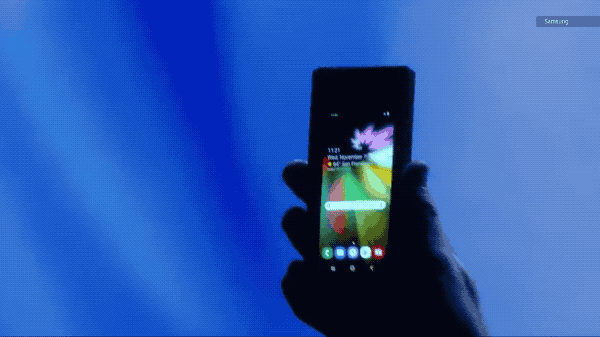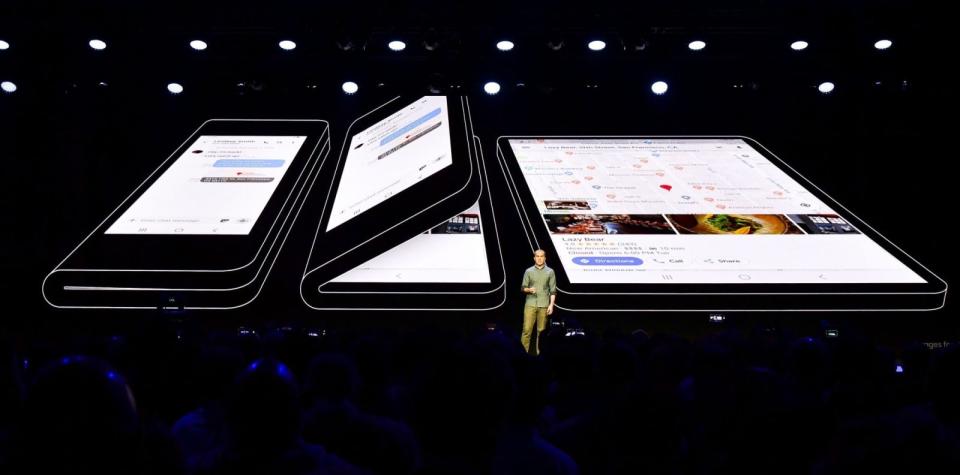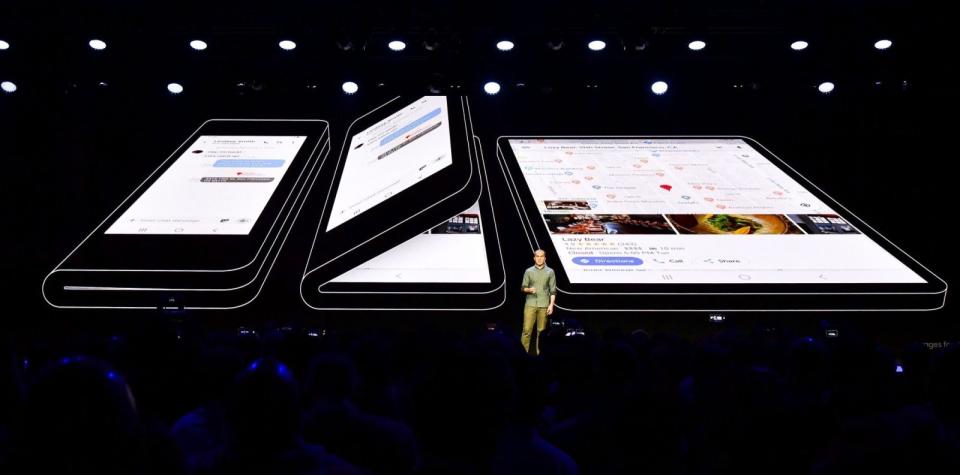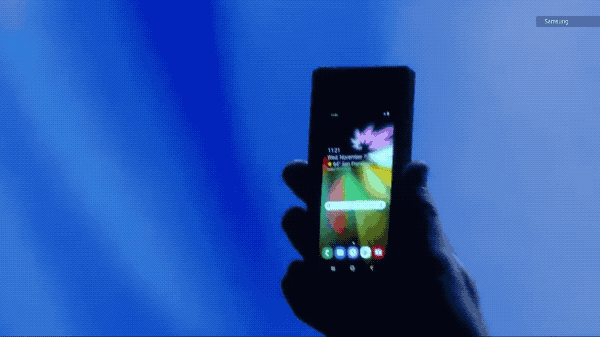Hit or miss, Samsung’s foldable phone is a big deal
It has the potential to redefine how we use our phones, or not.
How would I use it?
That's what we were all thinking as Samsung's Justin Denison whipped out a prototype folding smartphone. A phone that can open up to become a 7.3-inch tablet would be pretty handy when out and about. Like when writing on the go, or watching Netflix on a train or in a hotel room, for a start. A pocket-sized device that could double in size when required would be awfully handy.
But, the as-yet nonexistent Samsung device that will carry its Infinity Flex Display could easily crash and burn. Purely on a technical level, its initial form is bulky as hell. This is in order to accommodate the display and its flexing hinge. The prototype that Denison showed off at Samsung's Developer Conference looked as bulky as a Nokia Communicator, anathema to users who love their svelte Galaxy S8s and S9s.
Why did the executive have to pull the phone out in total darkness? Perhaps the backlight is weak, or there's an issue with power draw that would make extended use problematic. Powering a smaller 5-inch LCD and a 7.3-inch flexible OLED will take quite a lot of juice. At a guess, 4,000mAh is the smallest battery the phone could use, giving it parity with Samsung's other 7-inch tablets. It's also worth adding that a hinge, like any moving part, introduces a point of failure that you won't find on other mobile devices.
In the last few months, I've griped several times about how useful all-touch machines can be. Dual/all-screen laptops are still to be pretty unpleasant to do real work on, so Samsung had better offer a wireless keyboard and mouse as accessories. Doubling up on displays will also require more computing power and RAM, both of which will add to the price -- and size. I'd be surprised if this phone of the future doesn't retail for $1,500 given all of the technology it'll require.

So, is this another tech solution in search of a problem? Possibly, but that's hardly a unique situation in tech. And, I trust Samsung to exploit this niche properly, something it did so well with the Galaxy Note, which straddles the line 'twixt smartphone and tablet. Back in 2012, we called the 5.3-inch device "enormous" (Ha!) and warned folks to try before buying. Elsewhere, The Verge was harsher, saying that the phone had "failed to make a compelling case."
Eight years and 11 revisions later, and the Galaxy Note is one of Samsung's tentpole devices, beloved by millions.
This time, however, Samsung is entering water that has been sailed in by equally-prestigious tech companies, and none did very well. Let's forget Sony's Tablet P, a clamshell tablet that sandwiched two 5.5-inch 1,024 x 480 LCDs between the hinge, and move on to more recent efforts.
Last year's ZTE Axon M was a smartphone that did a similar job, sandwiching two 5.2-inch 1080p LCD panels together. Unfortunately, in our review, Chris Velazco said that he "quickly ran out of reasons to run different apps on [both] screens." After a while, he used both displays "just to do it, not because [doing so] made me any more efficient."
Samsung's creation is far more advanced, and the fact that it's courting developers is a sign that it's well aware of the work it needs to do. It's still far too early to praise or condemn Samsung's initial foray into the foldable hybrid market, but it is exciting. After all, this is one of the world's biggest device manufacturers showing off a bold new step in mobile computing.



